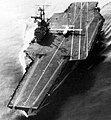فائل:Lockheed KC-130F Hercules aboard USS Forrestal (CVA-59) on 30 October 1963.jpg
Lockheed_KC-130F_Hercules_aboard_USS_Forrestal_(CVA-59)_on_30_October_1963.jpg (۴۵۸ × ۴۹۵ پکسلز, فائل حجم: ۶۷ کلوبائٹ, MIME type: image/jpeg)
فائل دی تریخ
فائل نو اس ویلے دی حالت وچ ویکھن واسطے تاریخ/ویلے تے کلک کرو۔
| تریخ تے ویلہ | نکی مورت | پاسے | ورتن والا | تیپّݨی کرو | |
|---|---|---|---|---|---|
| موجودہ | ۲۱:۰۵, ۲۱ فروری ۲۰۱۰ |  | ۴۵۸ × ۴۹۵ (۶۷ کلوبائٹ) | Kyteto | Cropped image to even the image out a bit |
| ۲۳:۳۹, ۷ اکتوبر ۲۰۰۶ |  | ۴۵۸ × ۵۵۰ (۴۰ کلوبائٹ) | Catsmeat | {{PD-USGov-Military-Navy}} USS Forrestal: CVA-59, with a C-130 on the deck. CV-59 Forrestal Category:C-130 Hercules |
فائل دی ورتوں
تھلے دتے گئے 1 صفحے اس فائل نال جُڑدے نیں
فائل ویاپک ورتوں
ایہہ دوجے وکیاں ایس فائل نوں ورتدے نیں –
- da.wikipedia.org تے ورتوں
- de.wikipedia.org تے ورتوں
- el.wikipedia.org تے ورتوں
- en.wikipedia.org تے ورتوں
- fr.wikipedia.org تے ورتوں
- hu.wikipedia.org تے ورتوں
- it.wikipedia.org تے ورتوں
- ja.wikipedia.org تے ورتوں
- ko.wikipedia.org تے ورتوں
- ms.wikipedia.org تے ورتوں
- nl.wikipedia.org تے ورتوں
- pt.wikipedia.org تے ورتوں
- uk.wikipedia.org تے ورتوں
- vi.wikipedia.org تے ورتوں
- zh.wikipedia.org تے ورتوں


